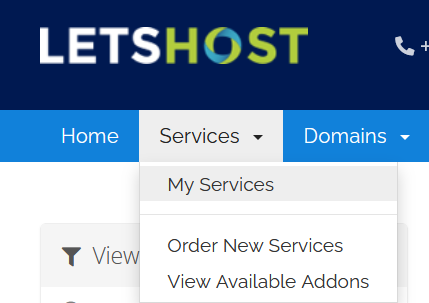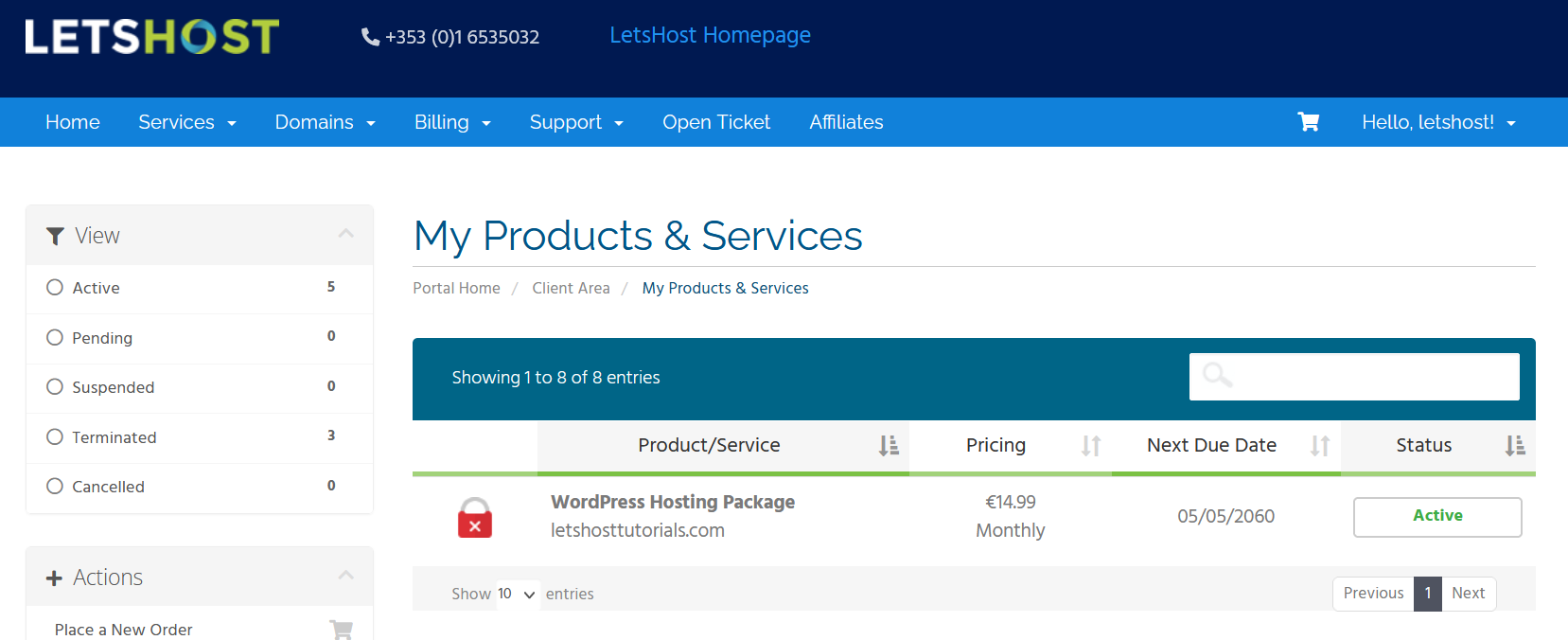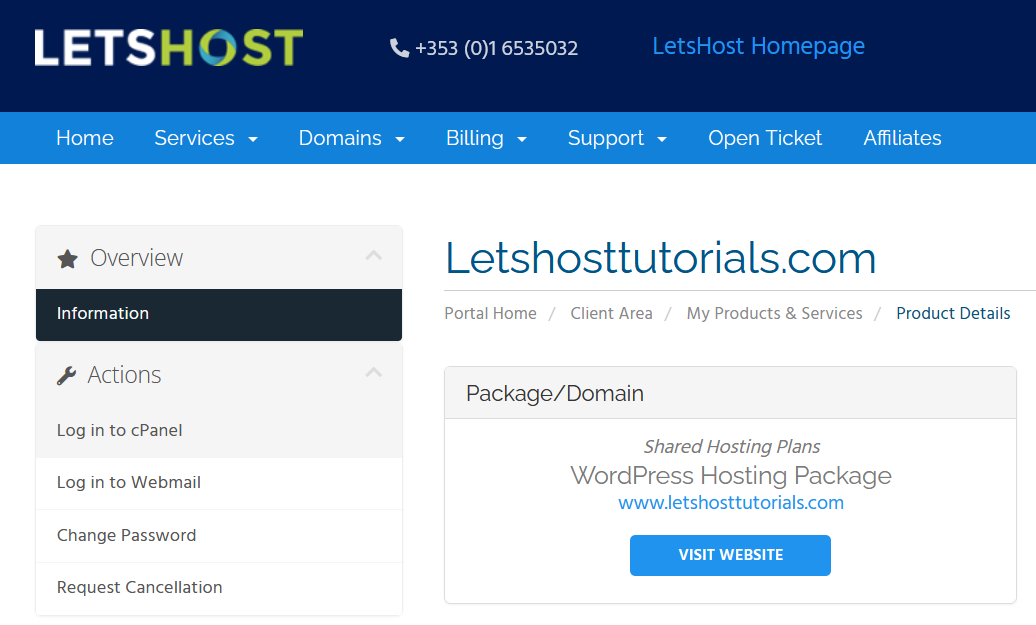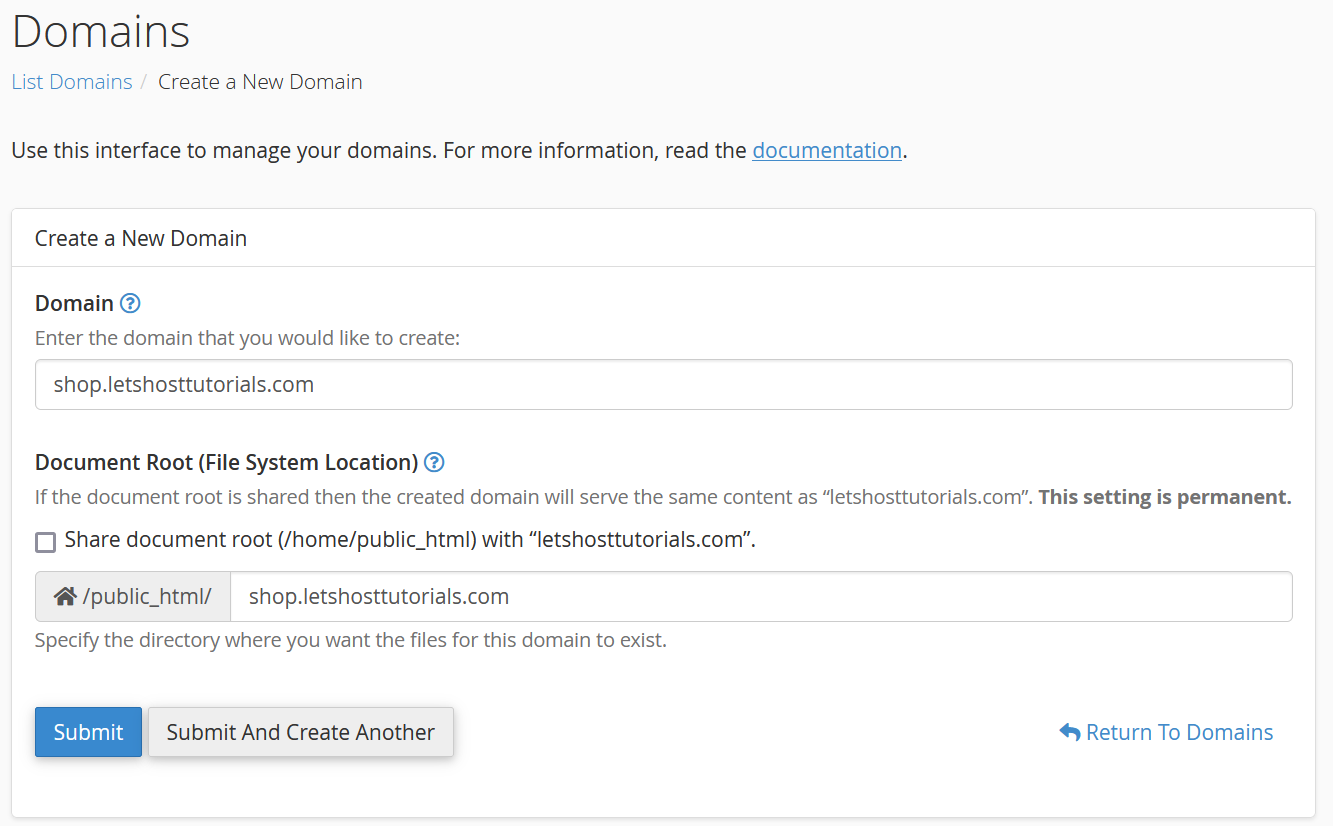To create a subdomain on your hosting account (eg. domain - letshost.ie, subdomain - kb.letshost.ie), please see the following steps:
- Log in to your LetsHost Client Area and click on Services > My Services

- You will see your products/services listed out here. Click on the green “Active” button beside your hosting package

- On the left, click 'Log in to cPanel'

- Once logged in to cPanel, click on the icon for 'Domains'

- Click the 'Create A New Domain' button on the right-hand side

- Enter the subdomain that you would like to add under the “Domain” section
- Untick “Share document root” and the remaining input boxes will autofill
- Click 'Submit', and the subdomain will be created
- Clicking 'Submit and Create Another' will create the subdomain and allow you to create another
- This will also create a folder in the specified root directory (usually public_html/shop.lethosttutorials.com as per the example)

This will also create a folder in the public_html folder with the subdomain name. To upload content to the subdomain, you will need to upload it to this folder.
If you require further information/assistance on this, please submit a ticket and a member of the team will be happy to assist further.